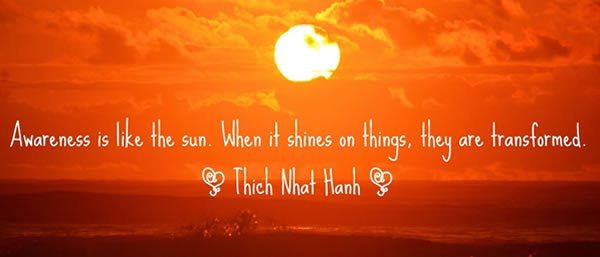Supporting your child to awaken the ‘Observer’ within
One of my client’s mothers recently sent me this note while her daughter was receiving a block of therapy sessions:
“Driving home yesterday Misha had her left foot in her mouth, lots of changes.”
Considering Misha mostly prefers to keep her legs straight and was having great challenges when I helped her to bring her legs towards her chest, this was a wonderful shift in her ability to recognize and connect with a part of herself that she might not have been aware of before.
What we see here is a great example of ‘Awareness In Action’.
We all possess this capacity we call Awareness, by which we’re able to observe, know and thus change ourselves. Like movement, awareness can also be something we actively do on a regular basis.
The term ‘Awaring’ – awareness in action – as ‘coined’ by Anat Baniel, founder of the Anat Baniel Method and author of “Kids Beyond Limits”, is an integral part of any child’s successful development.
When your child is ‘Awaring’, it’s as if your child has an ‘inner observer’ shining a light, revealing something your child has not felt or realized before. Awareness on this internal sensory level elevates your child’s brain to a place of discovery and choice rather than being reactive or on automatic pilot. The more your child uses the skill of ‘Awaring’ the more that capacity will expand, becoming stronger and more developed.
And as parents, when you support your child to become both more aware of connecting with their own body, and how it feels to move, you truly are helping your child to get to ‘know’ themselves.
In the process, it enriches your child’s ability to think, feel and form connections – first within themselves and ultimately with their environment and, of course, you.
“Awaring allows your child’s brain to make a quantum leap from where he presently is to his next level of abilities.” – Anat Baniel
3 PRACTICAL TOOLS FOR YOU TO EXPLORE
Awareness Begins with You
To effectively help our children to be more aware, we as parents need to become more aware of our own actions. Moving our bodies daily helps keep us in touch with how we feel and supports our health. Knowing when we are tired, thirsty or hungry and responding to these needs cultivates a good practise of self-care. Knowing when to say no and when to say yes, being true to how we feel and being able to express it reduces the physical and emotional stress of taking on too much. When as parents we are able to take good care of ourselves, we will be more available to the needs of our children.
Awakening the Observer Within
Gently touch your child’s hands and feet, counting their fingers and toes while gently squeezing each digit to amplify the sensory distinction between each finger or toe. Slowly massage and move your child’s arms and legs. Look to see if your child is sensing your touch and turning their gaze inward. While you are doing that, name the corresponding body parts and your associated actions. For example, “Mommy is squeezing your hand” or “Daddy is lifting your arm up”. Doing so helps your child map their different body parts and associates the action with your words.
Directing your child’s ‘attention to themselves’ in this way magnifies their ‘body image’ by increasing the representation of their different body parts in the sensory-motor cortex of their brain. It also connects words to actions thus facilitating their communication and speech development.
Naming your Child’s Actions
Without interpreting your child’s emotions, ‘naming’ your child’s action helps to bring your child’s attention back to themselves and allows them to be more aware of their own feelings. Simply because your child is doing something doesn’t necessarily mean that your child is aware of their own actions.
For example, if you child is throwing a tantrum and throws their toys across the room, reflect this action back to them..“You threw your toy. Oh, it fell behind the sofa.” Keep clarifying your child’s actions to them by simply stating them. This will distract your child from their emotional roller-coaster, bring them back to the present moment and help them see what they’ve done.
With your support to awaken “the observer” within, your child with special challenges can and will become more aware and present to what they are doing and experiencing.
QUESTIONS FOR YOU TO PONDER:
- When was the last time I ignored my own needs instead of listening to them?
- What would happen if I become more aware of my own actions, will I be able to make better decisions?
- How can I bring myself back to the present moment?
Now it’s up to you to engage yourself in this process.


